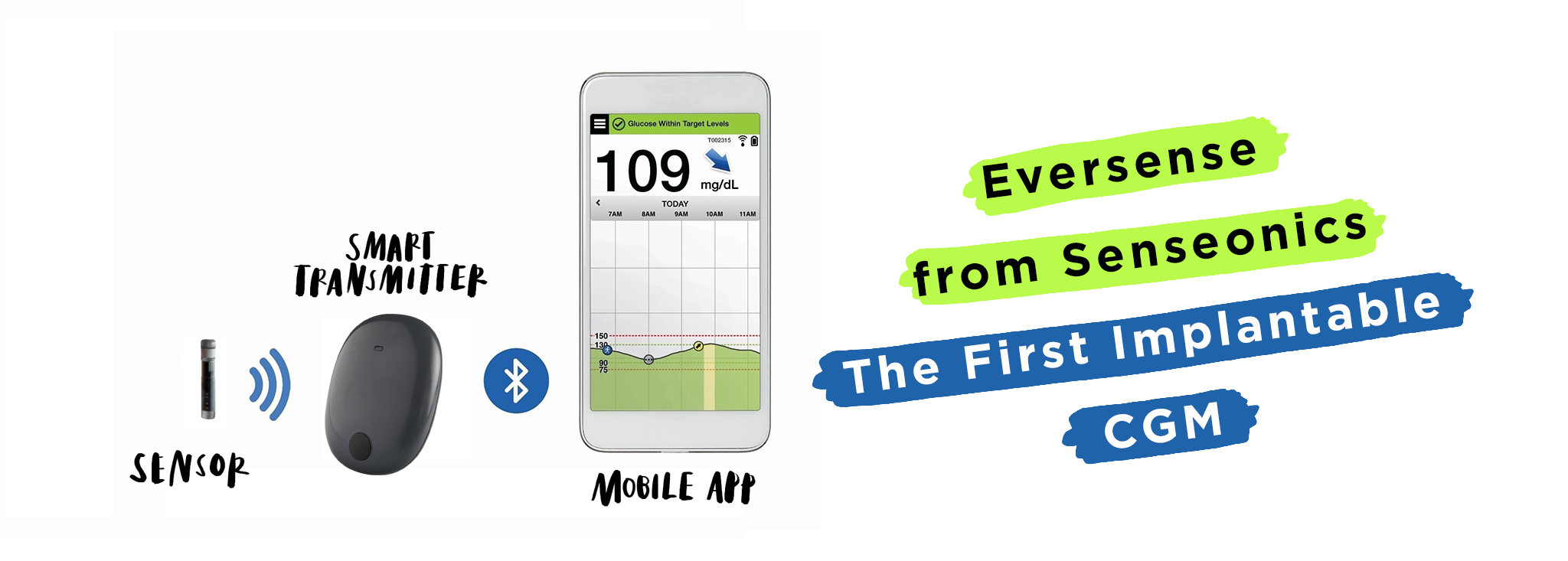Continuous glucose monitoring is not just for people with type 1 diabetes anymore! In fact, there are several reasons why a newly diagnosed person with type 2 should consider using a continuous glucose monitor (CGM). According to the American Diabetes Association 2023 Standards of Care, CGMs for type 2 diabetes are a logical choice. They recommend offering real-time CGM to youth and adults with type 1 and type 2 diabetes who are on intensive-insulin or insulin-pump therapy and can safely use the device.
What is a continuous glucose monitor (CGM)?
CGMs are wearable devices that simplify glucose tracking.
They measure glucose in interstitial fluid continuously, providing updates every 1–15 minutes.
The data is sent to a transmitter and displayed on compatible devices for easy monitoring.
Four companies currently manufacture CGMs in the United States.
CGMs have revolutionized diabetes management by tracking glucose trends and fluctuations in real time.
- CGMs help optimize medical therapy and prevent dangerous events, like hypoglycemia.
- People with diabetes rely on CGMs to monitor levels continuously and get instant updates from wearable devices.
- CGMs sound alerts for glucose that is too high or low and help track “time in range“—the time spent between 70 and 180 mg/dL for most individuals.
What are the parts of a continuous glucose monitor?
CGMs have three key components:
1. Sensor
- A small wire catheter is placed under your skin, usually on your belly or arm.
- Held in place with adhesive tape.
- Measures glucose in the interstitial fluid under your skin.
- Needs replacing every 7–14 days, depending on the device.
2. Transmitter
- Sends glucose data wirelessly from the sensor to a display device.
- In some systems, the transmitter is built into the disposable sensor.
3. Receiver or smartphone
- Displays glucose data in real time on a handheld receiver, smartphone app, or insulin pump.
- Allows you to view real-time glucose levels, trends, and history.
- Data can be downloaded to a computer and shared with your healthcare provider.
- Some systems continuously send data for ongoing monitoring.
Why is a continuous glucose monitor great for diabetes self-management?
There are many reasons to consider using a CGM if you have type 2 diabetes.
- Real-time CGM monitoring has led to life-changing results, helping people avoid potentially dangerous complications.
- The Centers for Disease Control highlights regular glucose monitoring as essential for managing diabetes.
- A March 2024 study in JAMA Network Open found that CGMs can lower the risk of vision-related complications like diabetic retinopathy.
- CGMs are invaluable for managing diabetes. They help you track how different foods, times of day, activity levels, and illnesses impact your glucose.
- CGMs aren’t just helpful for people with diabetes—they also benefit caregivers and loved ones involved in diabetes care.
- Finger-stick testing provides only limited snapshots, while CGMs deliver up to 288 readings daily for a full picture of glucose trends.
Here’s how CGMs offer life-changing advantages:
- Reduce or delay serious short- and long-term complications.
- Save money by improving diabetes management and reducing emergencies like hypoglycemia.
- Give detailed glucose data for better analysis by you and your healthcare team.
- Offer real-time biofeedback to help adjust diet or insulin doses, lowering risks of hypoglycemia and hyperglycemia.
Will I ever need to do a finger-stick test if I use a continuous glucose monitor?
- Some CGMs may require occasional finger-stick tests with a blood-glucose monitor to ensure accurate calibration.
- According to the Cleveland Clinic, finger-stick checks can offer reassurance if your CGM shows rising or falling numbers but you feel fine.
- They can also help clarify your glucose levels if you’re not feeling well, even when your CGM readings appear normal.
How much does a continuous glucose monitor cost?
- CGM devices can be expensive, but many insurance providers now cover them, helping make them more affordable.
- Be aware that your health insurance may only cover specific CGM models, and you’ll need to replace sensors and transmitters regularly.
- Check with your provider to see what devices and supplies are included in your plan.
- Additionally, many CGM companies offer resources to assist those who need financial help accessing these devices.
This content was made possible by Abbott, a Founding Partner of Beyond Type 1. Beyond Type 1 maintains editorial control over its content.





